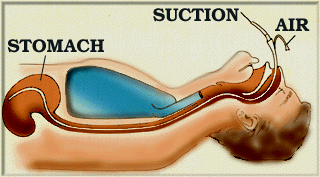A slew of tests have been performed and so far the doctors are pleased with the results. They have not found any infections and are hoping with time the breathing tube will be able to come out.
What is an intubation?
Intubation is a general term referring to the placement of a tube into a patient's body. The most common use of this term in the ICU refers to placing a breathing tube into a patient's airway (endotracheal intubation).
Why is endotracheal intubation needed?
Endotracheal intubation is necessary when patients can no longer cough and clear secretions or breathe on their own.
How is endotracheal intubation done?
Patients needing endotracheal intubation usually have a serious condition preventing them from breathing on their own. An endotracheal tube (breathing tube) can be inserted through the mouth or through the nose then advanced into the airway. Some patients do not require much sedation when the endotracheal tube is inserted through the nose. The breathing tube is slowly advanced into the nose passage and then slips into the patient's airway. Patients always require sedation when the endotracheal tube is inserted through the mouth. The person placing the breathing tube uses a small device called a laryngoscope to move the patient's tongue out of the way to see the airway. The endotracheal tube is then inserted while looking directly at the airway.
Does endotracheal intubation hurt?
If the breathing tube is placed through the nose, the patient will feel some discomfort. The patient will receive sedation and pain medications for this. If the breathing tube is placed through the mouth, the patient will receive anesthesia. After the tube is in place most patients have temporary difficulties with gagging that slowly lessens with time. Patients can not speak or eat while the breathing tube is in place.

Physical strength is measured by what we can carry; spiritual by what we can bear. ~Author Unknown


No comments:
Post a Comment